The best way to achieve multi-platform push live streaming
Introduction
Many novice streamers entering the industry are often uncertain about which platform best suits their needs or offers the highest traffic. Consequently, they seek to explore multiple platforms to diversify their presence and enhance security. This trend has generated a demand for comprehensive multi-platform live streaming solutions.
1. Using PC software + video capture card program
In google search multi-platform streaming software, there will be a lot of various software, most of them are free, these software is good or not, need to test to know, but OBS should be used by the most people, but it needs a computer + video capture card to support it, Long-term operation will have stability problems, and the price of a PC is not cheap, it also needs more than 600USD.
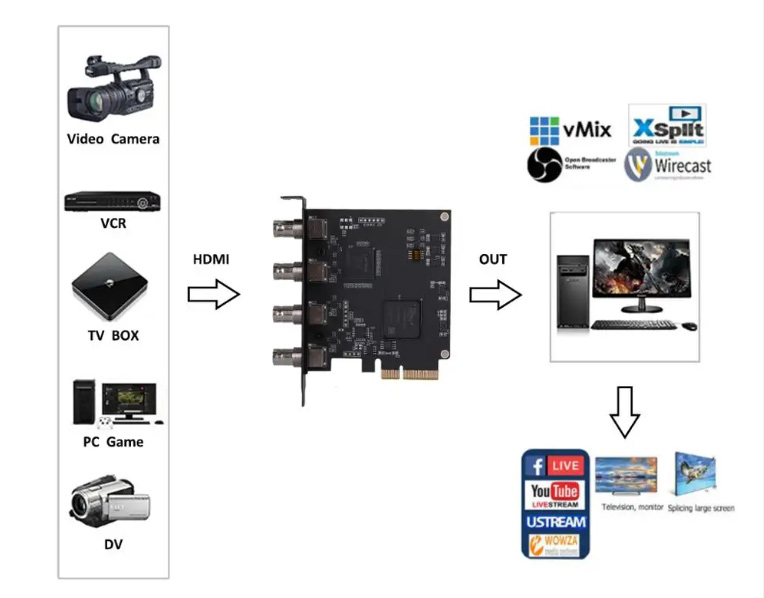
2.Using mobile live streaming
We need to use multiple phones to push streams to multiple platforms, one phone to one platform. The almighty Amazon can always find lots and lots of cool multi-phone racks that are easy to install and everyone knows about. As shown below:

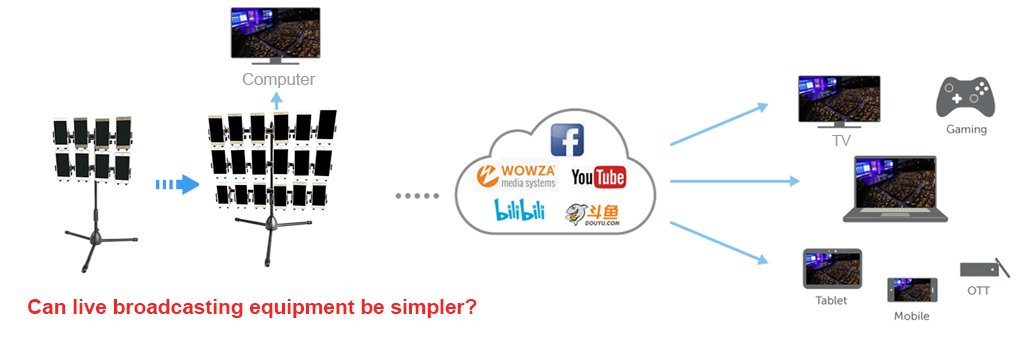
The advantage is that the operation is relatively simple. Disadvantages:1) The cost is relatively expensive, a mobile phone is about 300usd, 4 sets are about 1200-1500usd, if 18 sets are about 5400usd, so how should the small anchors who just enter the industry choose? 2)The problem of the host facing the camera is that there are many mobile phones, not every mobile phone can occupy the best position. There is only one C position.
3. JLvision video encoder solution
JLvision video encoders are available on multiple platforms, the least expensive one being ENC1-V3. JLvision encoder the use of online instruction manual, there are many practical cases, the encoder background how live platform access: Wowza/Facebook/Youtube/douyu/Bilibili platform; Seamless access to third-party software: OBS, vMix, NVR, etc. Application scenarios such as: mobile game live broadcast, host game live broadcast, network teaching, wireless transmission (NDI encoding + decoding), mobile live broadcast, information release, IPTV, etc. See the detailed instruction manual https://www.h265encoders.com/support/enc-series-user-manual/.
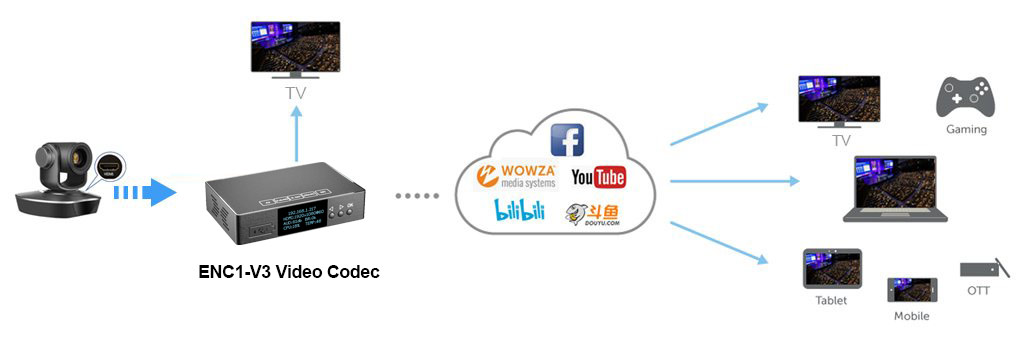
3.1 Popular live broadcast scheme
The most populist solution is Logic UVC C270 USB camera +ENC1-V3 encoder, as shown below:
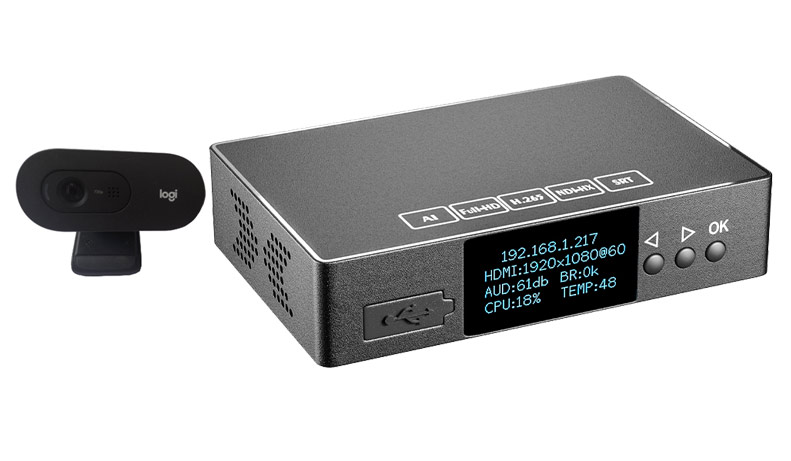
3.2 Some professional live broadcast program
Small hosts can consider using HDMI camera +ENC1-V3 Video codec to achieve multi-platform live broadcast at the same time, the connection diagram is as follows:

3.3 How to Get Started
Open PC browser, enter the encoder IP address to enter the background configuration, select ‘Extended -> Multiple Push’. As shown below:
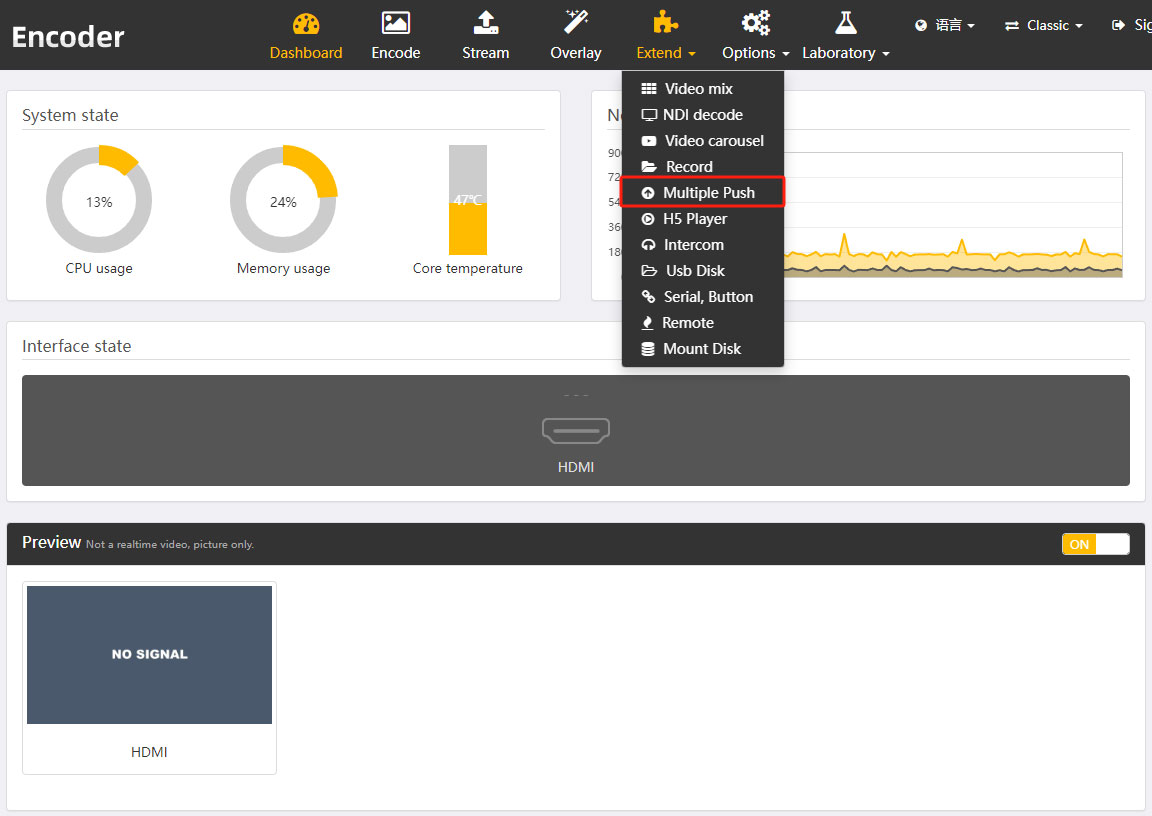
Step 1: log in to the background of each live broadcast platform and open the live broadcast, and then copy the live stream code address to the URL bar of the video encoder’s push stream setting. By default, there are only four URL bars, which you can add by clicking the Add button. There is no limit to the number of live streams you can push as long as you have enough bandwidth. The enable flag should be ON. If you don’t want to push a platform, you can delete the address bar or change the enable flag to ‘OFF’.
Step 2: After setting the push stream URL parameters, press the “Save” button to save in real time.
Step 3: Switch the signal source. If you choose the popular live broadcast scheme, choose the USBCam channel. If you choose the professional live broadcast scheme, choose the HDMI channel directly.
Step 4: Set up the automatic backpush flow on the boot, so that the push flow will automatically start after the next boot without intervention. If you do not want to start the automatic push flow, set the automatic operation ‘OFF’.
Step 5: Save the parameters set in Step 3 and 4.
Step 6: Click “Push Stream” button to start pushing stream. After the start of the push stream, if the stream can be successfully pushed, the “speed bar” shows the current bit rate of the push stream. As shown below:
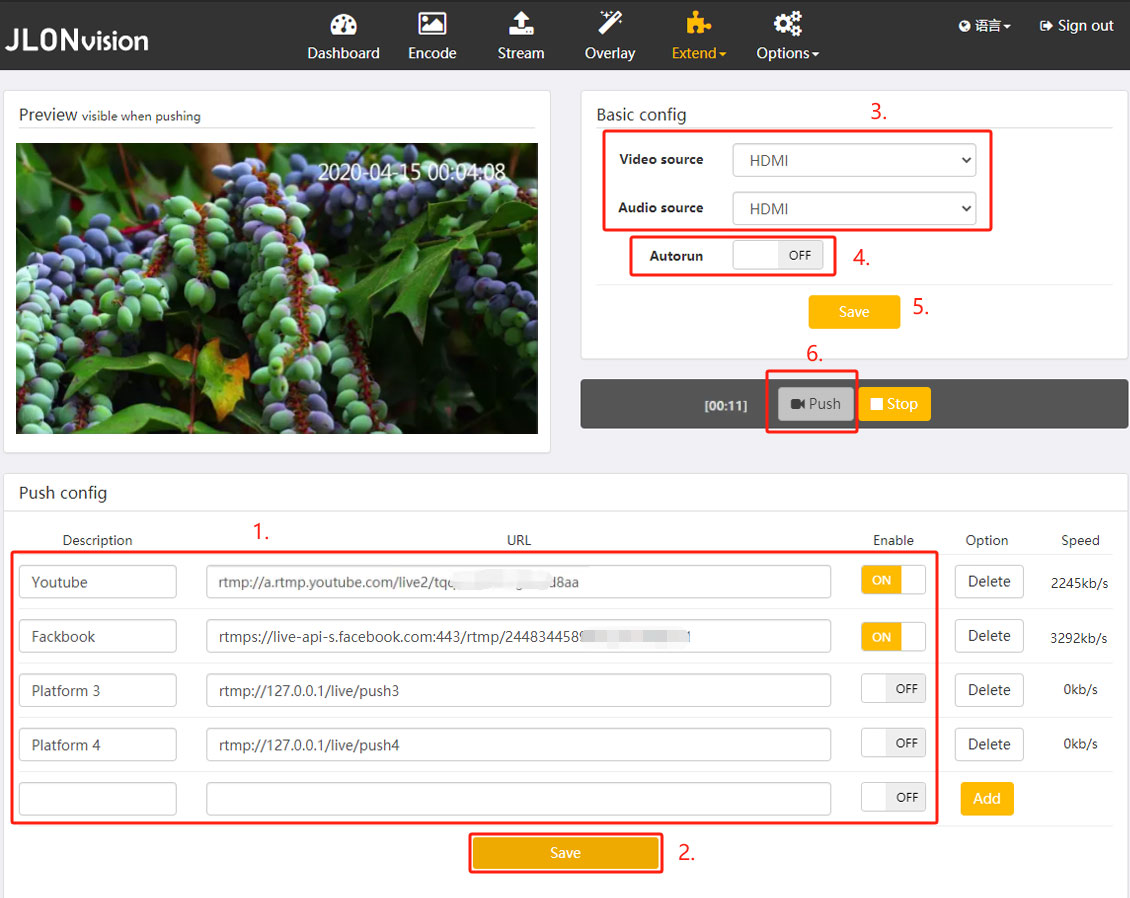
Attention please! Facebook needs RTMPS to push, many encoder manufacturers do not support RTMPS
4.All the above three methods can achieve a multi-platform live broadcast scheme. Which scheme is good depends on the personal preferences of the anchors.
